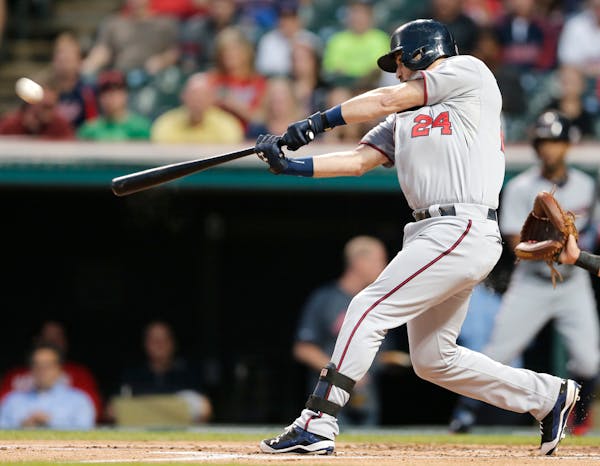In cleaning out my 2015 notebooks as we prepare for the run-up to spring training, I came across some notes from a conversation I had with Brian Dozier on the season's final weekend. I wrote a story earlier that week about how Dozier has never, not once, swung at a 3-0 pitch during his career, and he was kidding me about the pressure he felt to swing at one, just to let pitchers know that he might.
That got us talking about situational hitting, and I asked him what his favorite count is for hitting. His answer surprised me.
"I think 2-1 is my best count when [the pitcher] misses with a breaking ball on 1-1," Dozier said. "He's trying to get me to swing at his pitch on 1-1, but if it misses, he doesn't want to go to 3-1. So a lot of times, I feel like I can expect a fastball in that situation. And I try to be ready for it."
Interesting theory, but I had no idea how right he was. I looked up Dozier's 2015 season, and sure enough, he kills 2-1 pitches. Not only did his OPS balloon to 1.387 when he put a 2-1 pitch into play — better than on any other count, and miles ahead of the .876 AL average — but his seven home runs on 2-1 pitches actually led the majors, one ahead of Texas' Shin-Soo Choo.
Dozier said he didn't realize the numbers backed up his theory so strongly, but knew he had had a good season following that pattern. "A 1-1 breaking ball that misses, that's the key," he said. "I love that."
So I dug into those seven home runs, and sure enough, his instincts are amazing. Five of those seven home runs came on four-seam fastballs, including a 96.1-mph pitch from Zach McAllister and a 95.5-mph pitch from Tanner Scheppers. All seven of them came after he took a ball at 1-1 in the count — the at-bat never started 2-0, in other words — and six of those were, yes, breaking pitches.
You've got to have some serious physical talent to hit home runs in the big leagues, no doubt. But Dozier proves how important the mental part of the game is, too.
Buffalo Bills owner Terry Pegula explores selling non-controlling, minority stake in franchise

